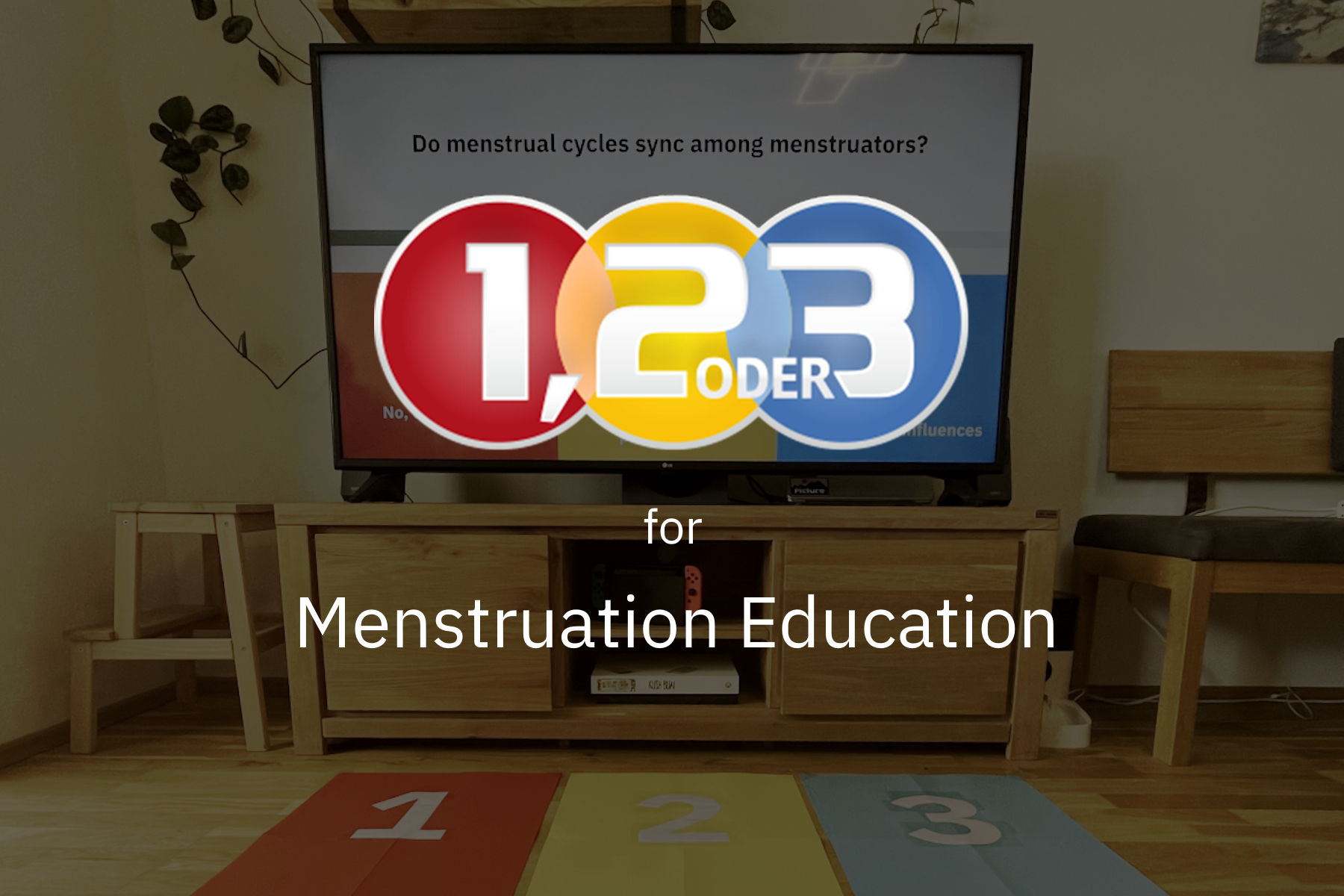
Duration: 16 weeks
My Roles: UX researcher, UX designer

Duration: 16 weeks
My Roles: UX researcher, UX designer
In the spring of 2023, I took the courses Contextual Analysis & Context Capturing and Contextual Interaction Design in my master's program. Together with Eva-Maria Strumegger and Luzie Schroeter, we researched, conceptualized, designed, and built a prototype to support menstrual activists.
Menstruation is considered a taboo topic in our society [1], and this is problematic because the shame surrounding this taboo harms menstruators psychologically by perpetuating the idea that they are inferior and dirty [2]. Menstrual activism is an area dedicated to breaking taboos related to menstruation [3], yet it has been neglected in human-computer-interaction (HCI) [4].
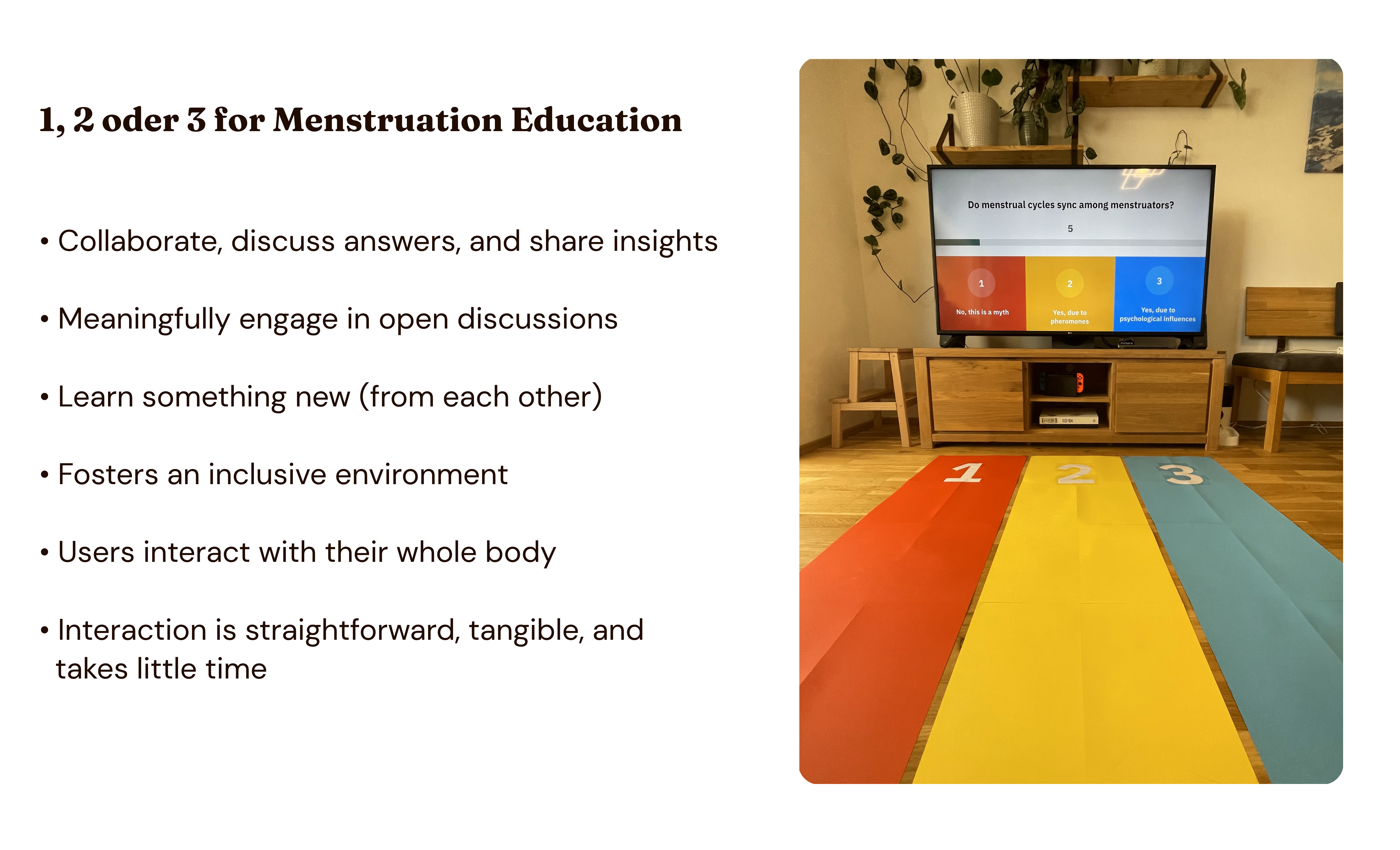
In order to better understand menstrual activism, we looked at related work and projects within this area to better understand what characterizes it and what may contribute to the taboo around menstruation. Molina [1] pointed out that the lack of open conversations around menstruation and the continuous genderization of menstruation promoted societal menstrual shame. This was backed up by Quint [5], founder of the menstrual activist organization Period Positive, who similarly argued that it is critical to engage all genders in the topic of menstruation in order to combat menstruation stigma. These insights inspired us to formulate our initial research question:
“How can we empower people of all genders to engage in an open conversation about the topic of periods in order to make the topic more socially acceptable?”

Image by Freepik
In order to address our initial research question during our first study cycle, we conducted semi-structured interviews with menstrual activists and people of all genders who were not menstrual activists. We delved into comfort levels, attitudes, and activism, aiming to identify strategies to empower individuals and promote period positivity.
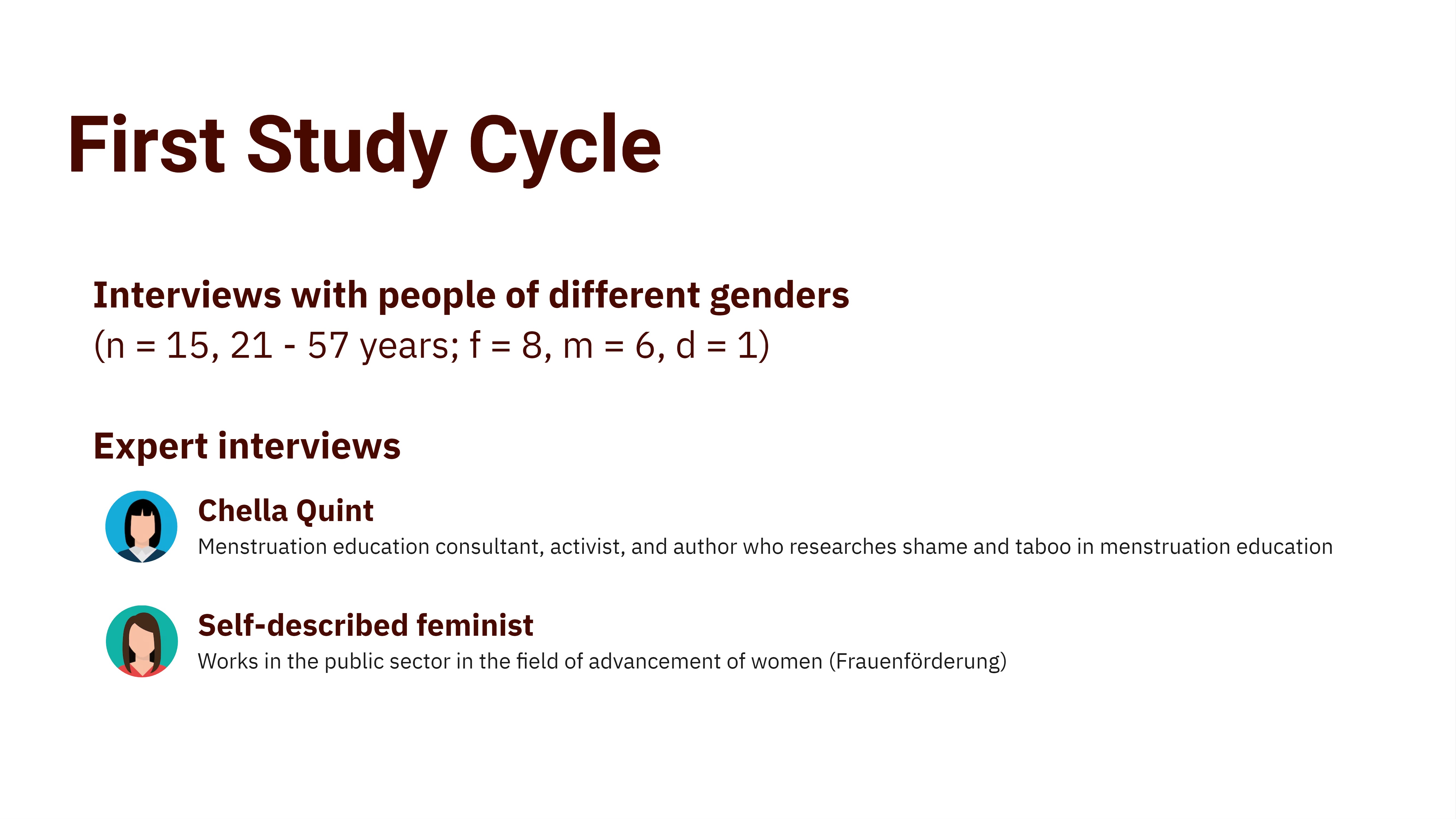
After conducting and transcribing our interviews, we performed a thematic analysis on this data. The following themes emerged from our analysis:
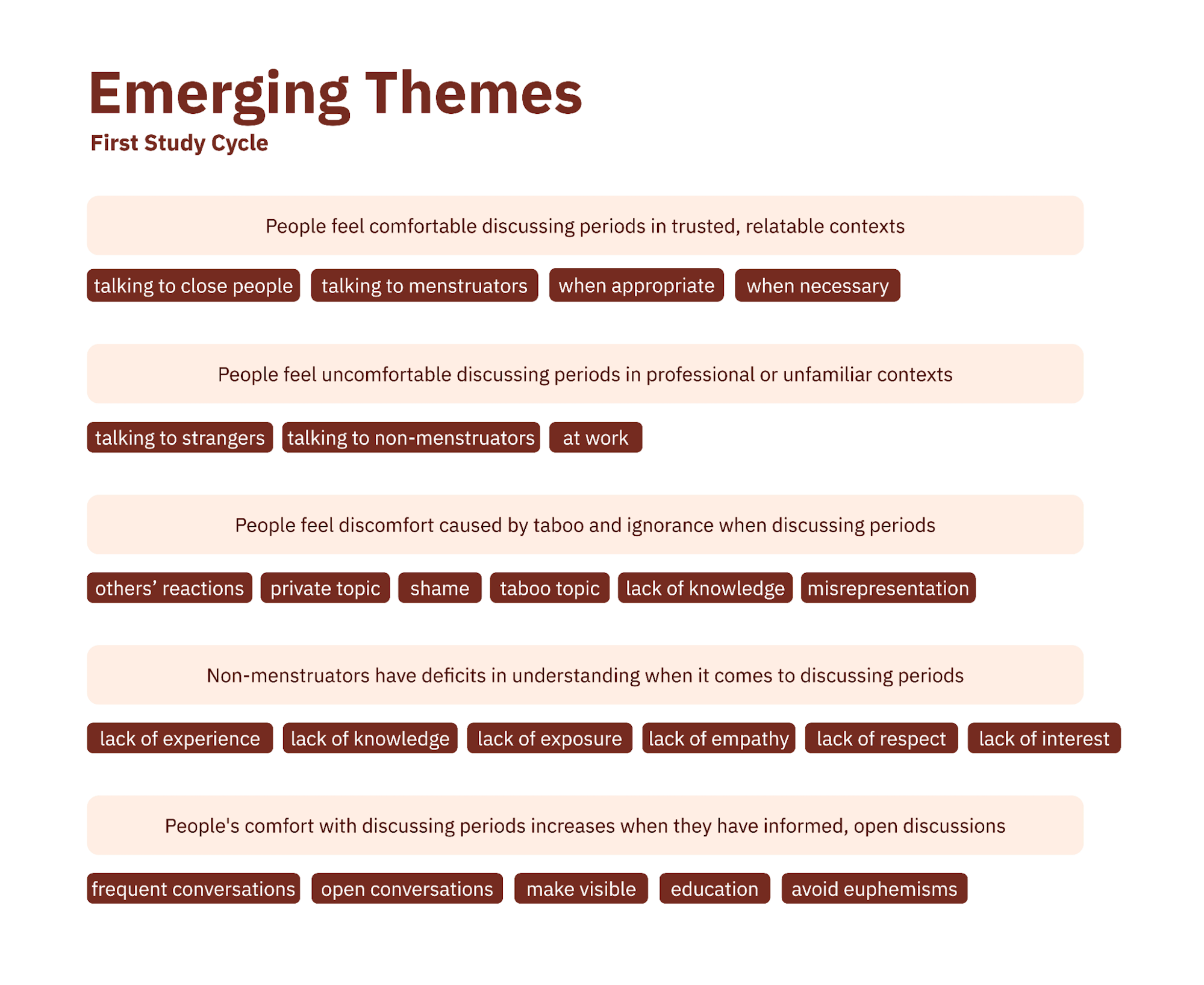
The findings of our thematic analysis from our first study cycle revealed that a major hurdle to discussing menstruation openly was the lack of exposure and education surrounding this topic, especially among non-menstruators. Thus, in our second study cycle, we focused on identifying characteristics that a prototype should have in order to effectively support budding menstrual activists in engaging everyone, but especially non-menstruators, in informed conversations about menstruation. Our guiding research question was the following:
What characteristics should a prototype have to effectively support budding menstruation activists in engaging non-menstruators in informed conversations about the topic of menstruation?
In order to address our research question, we conducted co-design brainstorming sessions with relevant experts in a one-to-one format.
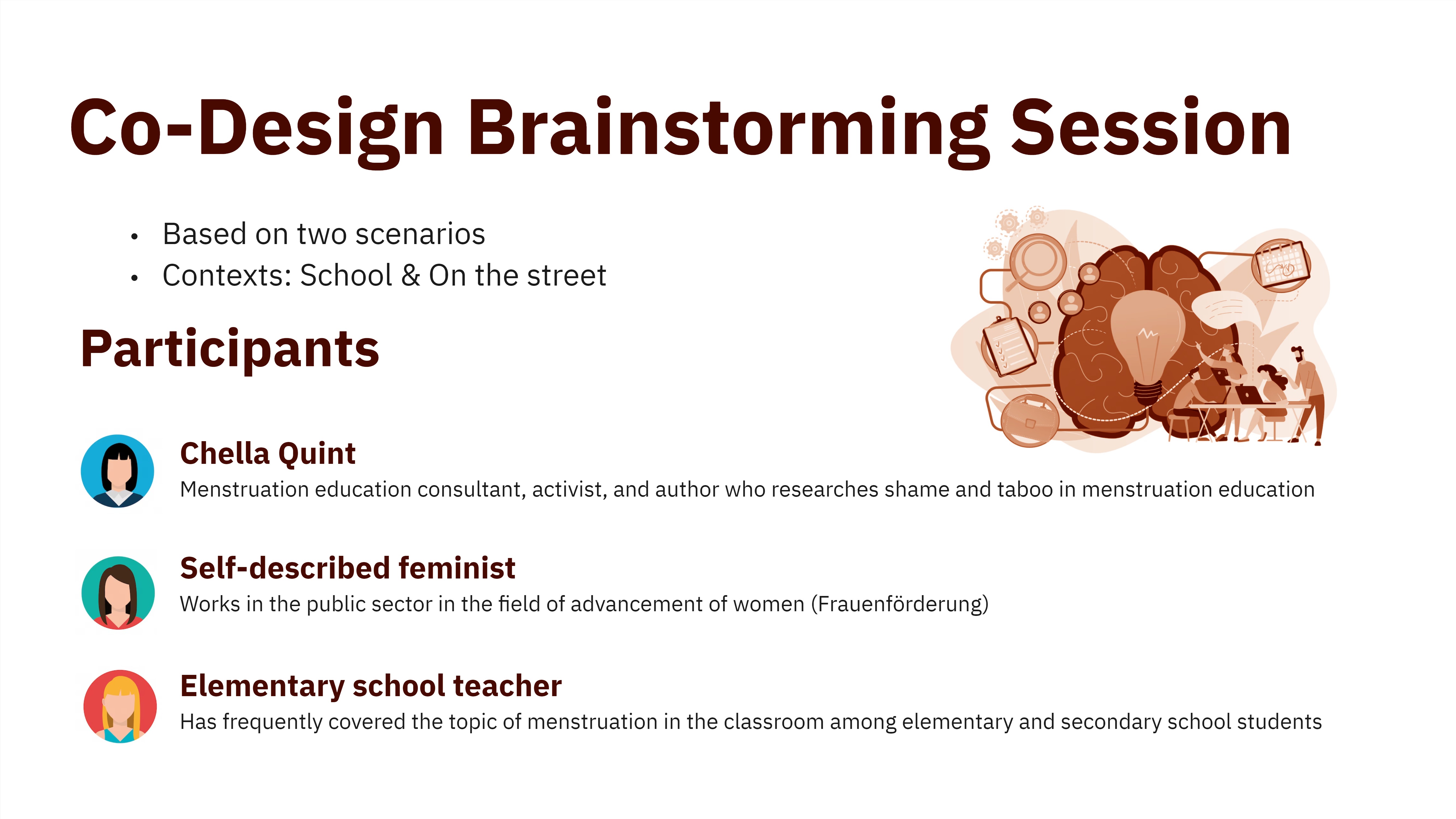
We chose this method because it encouraged the spontaneous expression of ideas and enabled us as researchers to support our experts in making their ideas more concrete. The experts shared their thoughts, experiences and ideas, while we sought to understand them in detail by asking in-depth questions and stimulating the development of concepts and sketches. After we analyzed our data by grouping and abstracting ideas presented during the co-design brainstorming session, the following design implications for our prototype emerged:
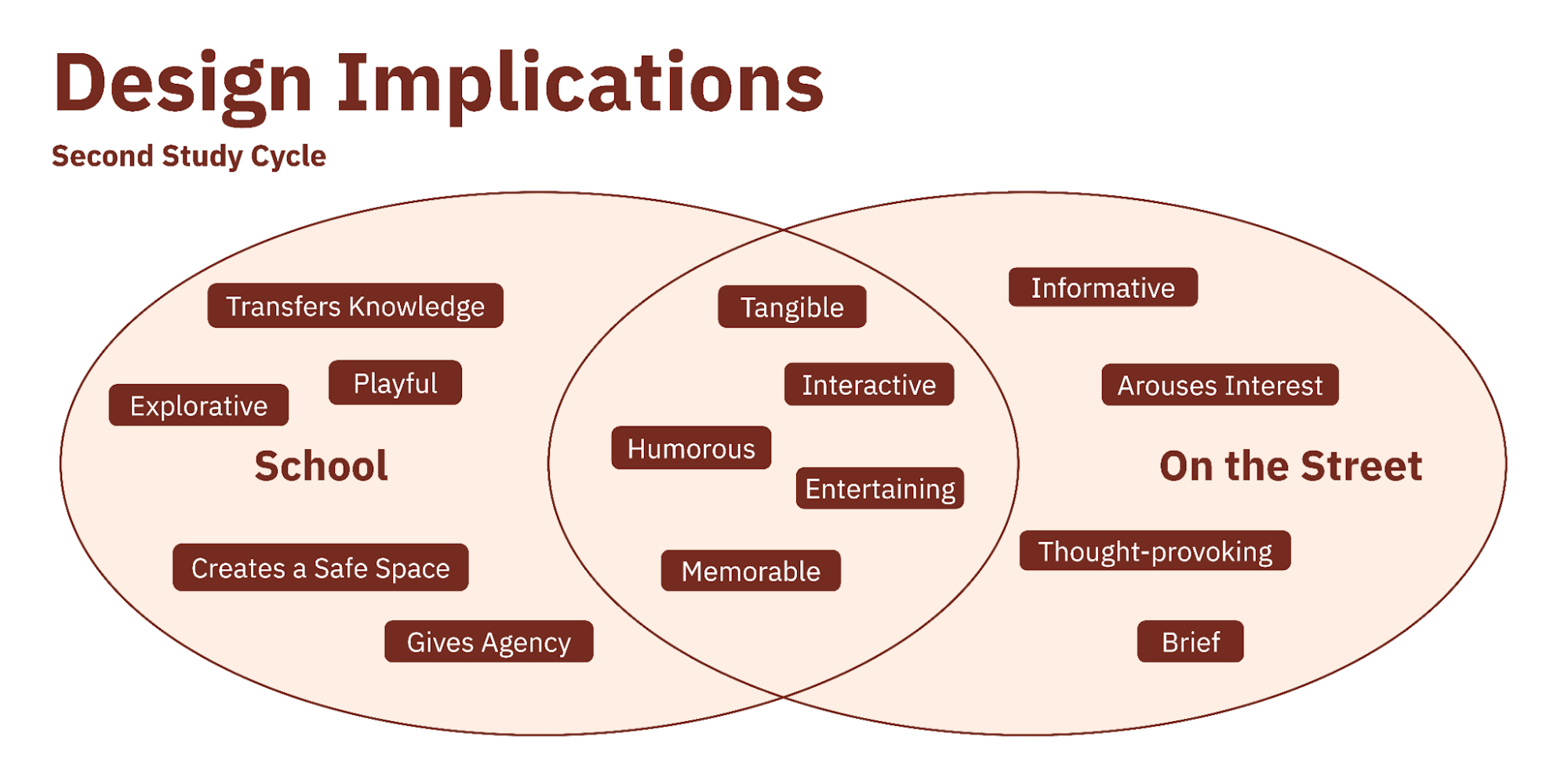
Based on the findings from our co-design brainstorming sessions, we iterated our design brief to be the following: "Through our artifact, we aim to address the lack of education and exposure surrounding the topic of the menstrual cycle. By interacting with our tangible artifact, everyone, but especially non-menstruators, should be encouraged to meaningfully engage in open discussions and learn something new (from each other) regarding the menstrual cycle." This design brief, along with the design implications from our second study cycle and design ideas we had been accumulating (my design process documentation for this can be viewed here), was used to guide the sketches and designs of our low-fidelity prototypes below.
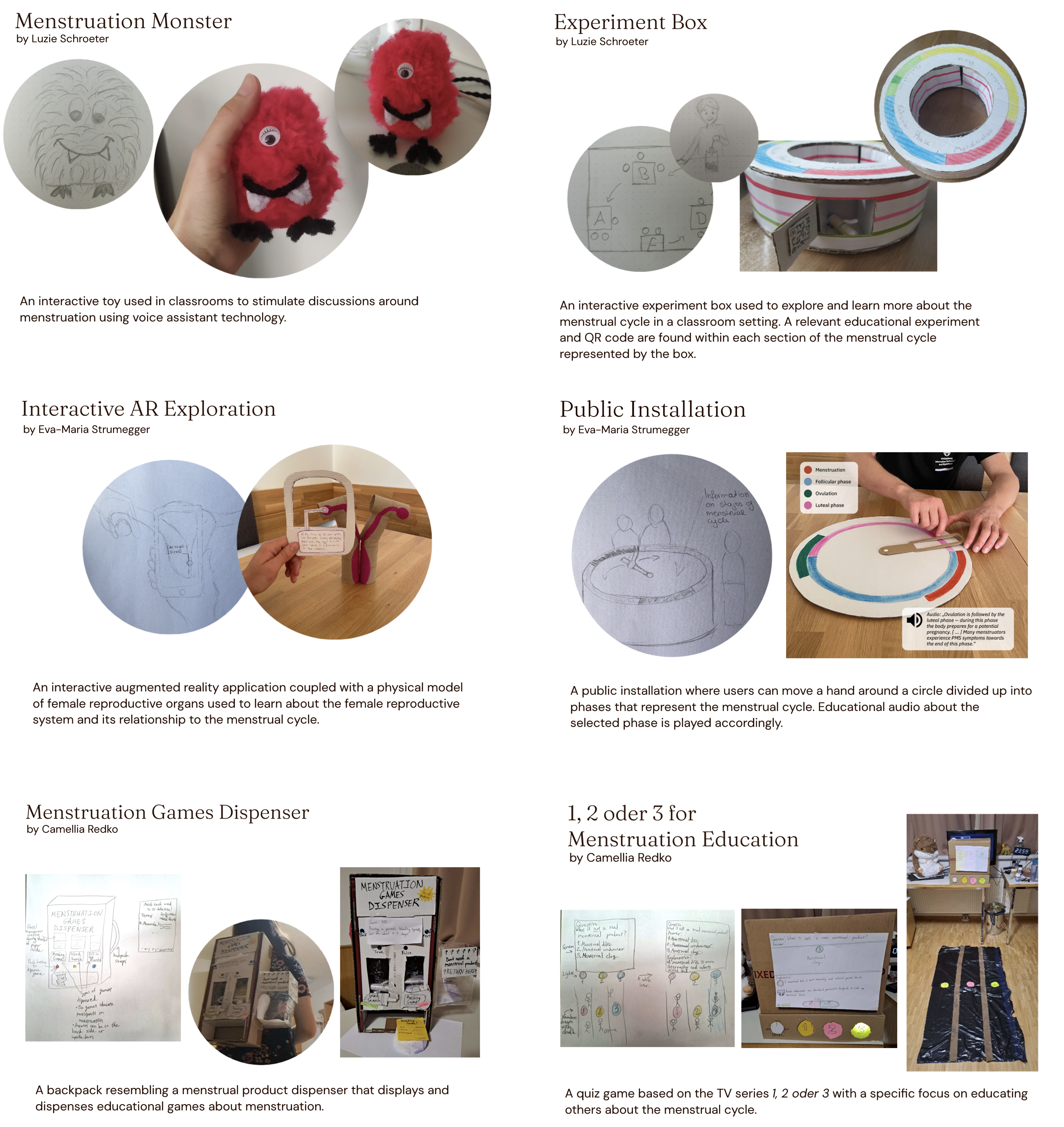
In the end, we decided to build a high-fidelity prototype mainly based on "1, 2 oder 3 for Menstruation Education" because it seemed to best fit our design brief and design implications from our research. It also avoided issues found in other low-fidelity prototypes. For example, the menstruation monster was problematic because associating menstruation with something negative, such as monsters, could reinforce the taboo around menstruation, and the menstruation games dispenser likely would have felt discouragingly complicated for users.
For our final prototype, a screen displays an educational question about the menstrual cycle and three possible answers. Players must hop onto an answer field marked on the floor to indicate their answer. After a while, the correct answer as well as explanations for each answer option are displayed on the screen. By collaborating, discussing answers, and sharing insights, people on the street can meaningfully engage in open discussions and learn something new (from each other) regarding the menstrual cycle. This fosters an inclusive environment where everyone, including non-menstruators, feels comfortable. By embedding the artifact in a real space and having users interact with their whole bodies, the interaction is straightforward, tangible, and takes little time. This prototype also suits many of the design implications found in the second study cycle, as it is entertaining, humorous, memorable, exciting, informative, tangible, interactive, arouses interest, and can be brief.
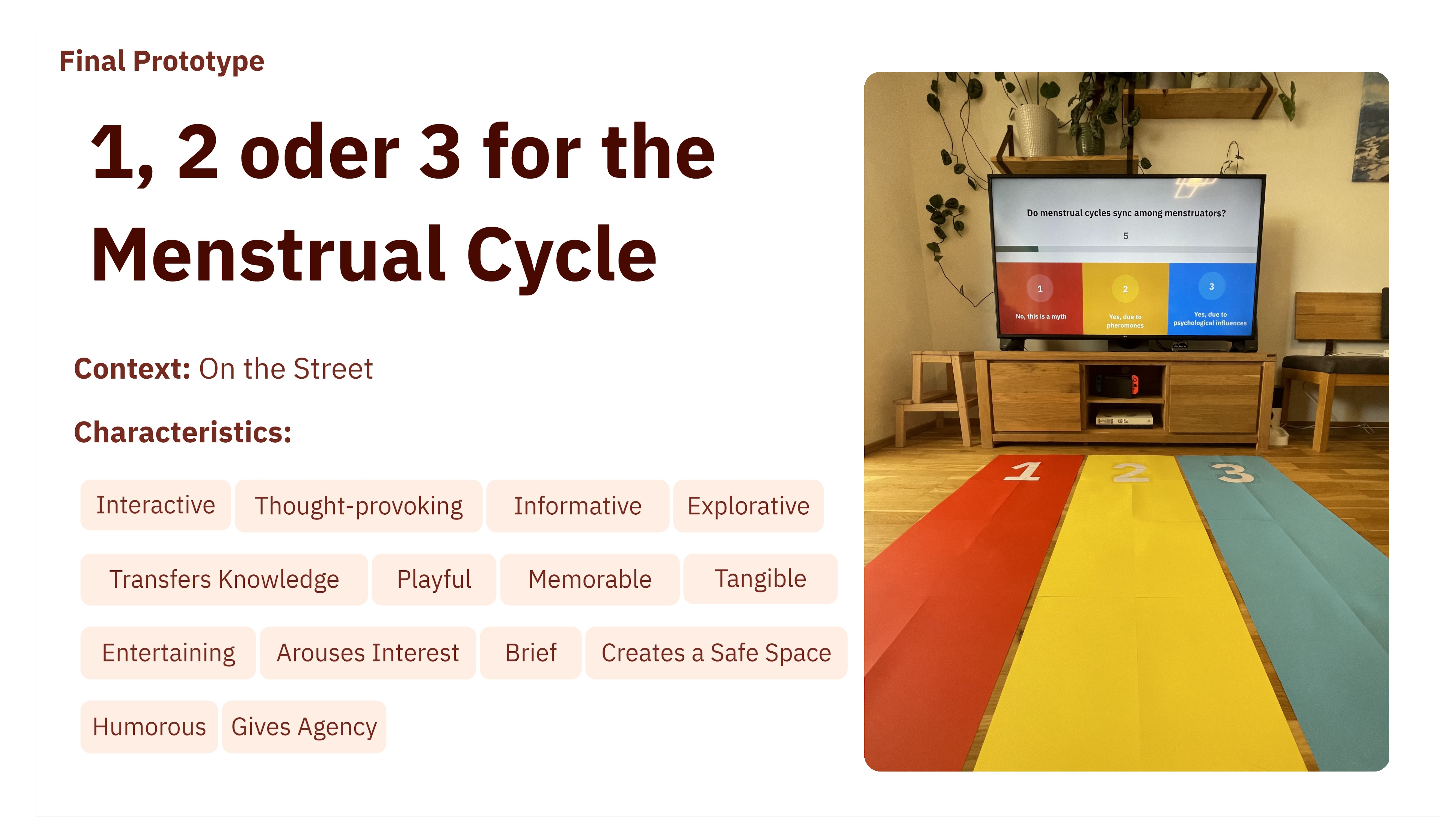
The link to the full Figma work file can be found here. Additionally, my design process documentation can be viewed here, and a detailed report about this project can be read here.
I am delighted to have contributed to this project, as I learned so much about researching, conceptualizing, designing, and building a prototype for a real-world problem. I greatly appreciate my fellow group members, Eva-Maria and Luzie, and the numerous participants who collaborated with us. Reflecting on my experience, I learned a few valuable lessons:
1. Silence can be golden. I love exploring others' perspectives with the help of follow-up questions, but I did not realize how valuable silence could be in interviews until it was brought to my attention within a lecture for this project. I learned that what often feels like a long time for the interviewer may feel like a short time for the interviewee, and giving interviewees time and space for further quiet reflection led to valuable insights that I may have otherwise not obtained if I had jumped to asking follow-up questions too quickly.
2. Strategically taking breaks can enhance productivity. During our initial brainstorming session, my group faced burnout after a long day of classes, leading to a stalemate. However, a refreshed session a few days later yielded significantly more productive results. This instance highlighted the negative impact of burnout on creativity, echoed by researchers like Huhtala and Parzefall [6]. Thanks to this experience, I've learned to prioritize breaks when feeling burned out during ideation, as this may lead to better results in the long run.
3. A culture of appreciation transforms workplaces. My long-held value of appreciation took on a new meaning within the context of team dynamics during this project. There were instances where my team's resilience was paramount, and gratitude helped us persevere. When I suddenly had to spend multiple hours handling an unforeseen demand in our project, one of my group members expressed appreciation toward me for this, which consequently made this task feel less daunting. I was surprised by how powerful a few heartfelt words could be, and I found a study mentioning that 54% of unappreciated employees felt the amount of stress they deal with at work is more than they can handle, compared to 13% of appreciated workers [7]. This figure impressed me and encouraged me to actively nurture a culture of appreciation within our group by making every effort to acknowledge and express gratitude for substantial efforts, which is a practice I hope to perpetuate in future endeavors.
